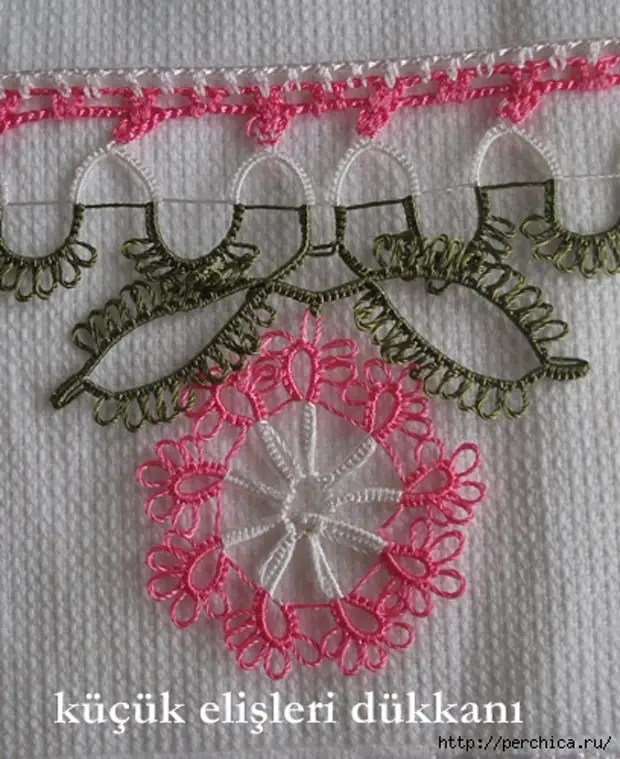
| 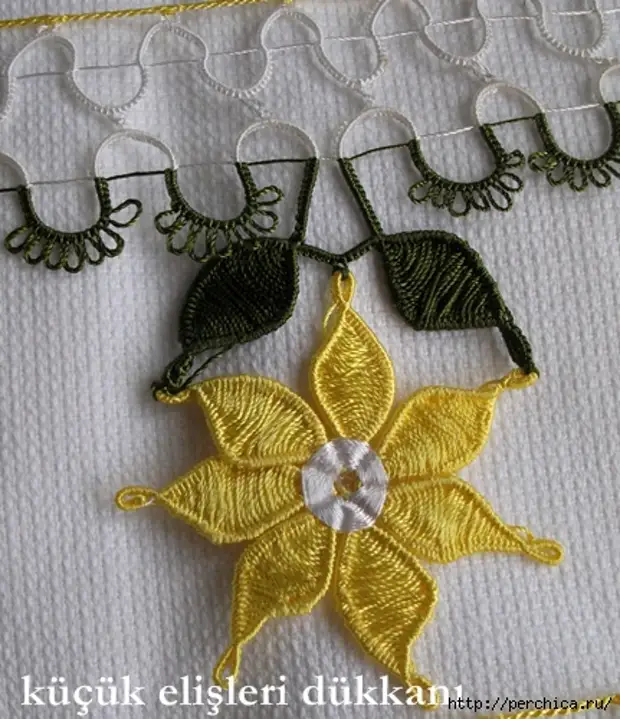
|
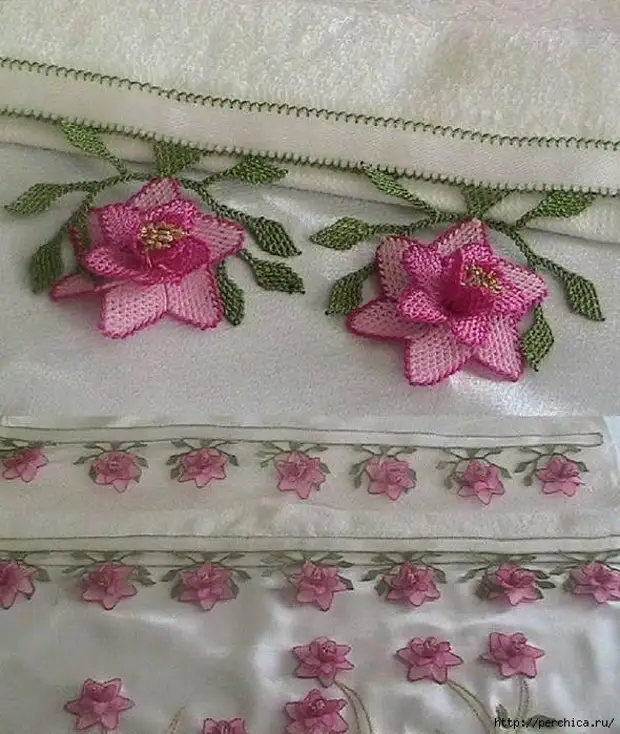
| 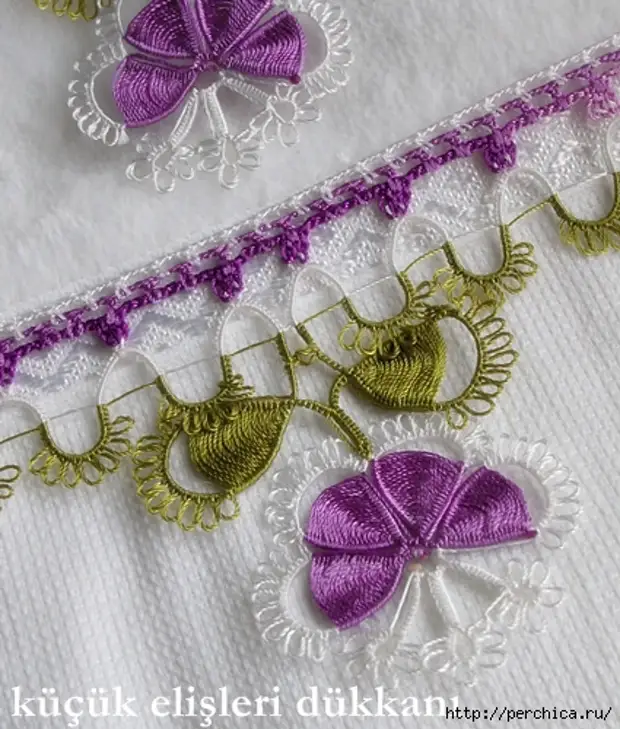
|
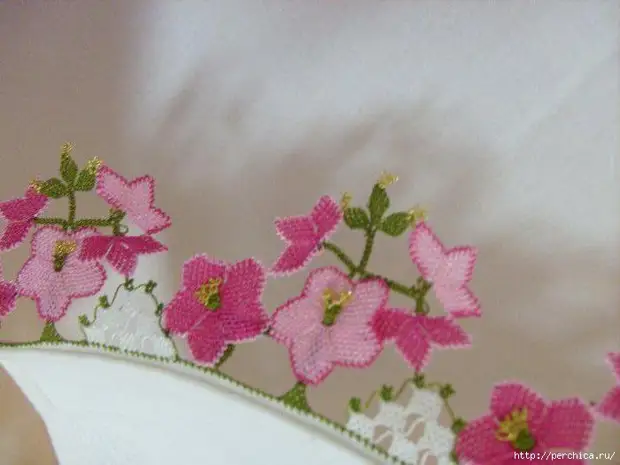
| 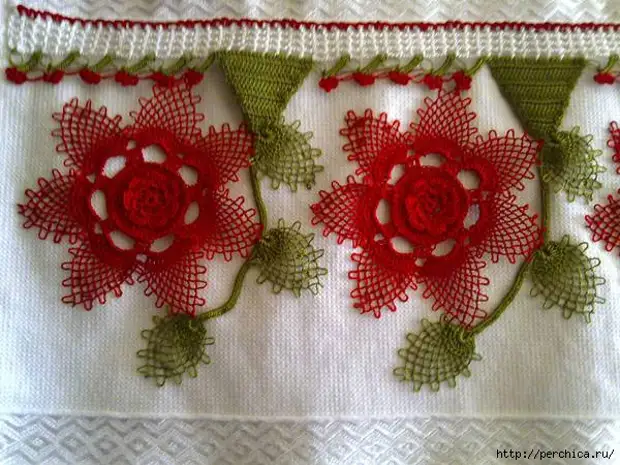
|
To perform samples of sewing simple lace, you can take a braid or tissue, pre-trimming the edge of the fabric with a smooth roller (A) or looping seam (6, c. Fig. 1). The working thread is selected in accordance with the tissue density. Thus, when working with a batter, a marquie, chiffon or other thin material, a coil thread number 80 and 60 is used, for a more dense tissue No. 50 and 40. For the processing of a coarse web or other such fabric, take the thread No. 10, 20 - "more paint", "Snowflake", "Kameu", for Sukna, terry towels - "Iris" or "Mac", etc. Always when working, you need to use a twisted thread and a short needle selected in the thickness of the thread.
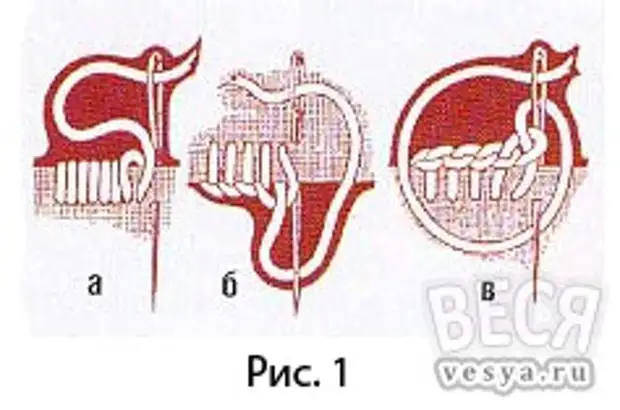
The sewing of a simple lace lies in the row of airship a row for nearby "by air". To make it easier to sew, under the fabric put a substrate from cardboard or oilcloth, fixing it so that the strip, equal to the width of the future lace, performed over the edge of the fabric. Lace sew over the substrate, without piercing it with a working needle.
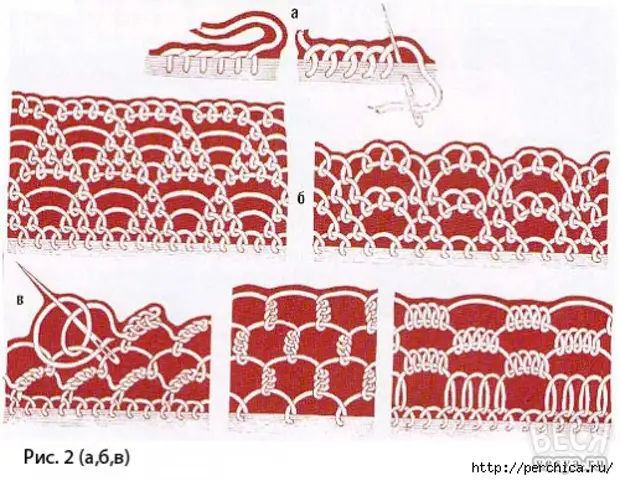
Figure 2 shows the options for the manufacture of the simplest lace. As already mentioned, the looping seam is performed first, and on it "build" the rows are circles. The pattern "B" consists of alternating large and small loops, tops a dense number of small air loops. The neighborhood "B" consists of air loops, partially accused by looped shsom, the "G" pattern has a form of a simple grid of one or more rows. The grid is built from air loops, the legs of which and the last row from the top are covered with looped seam. Samples "D" and "E" demonstrate methods for performing a simple "pico" on lace.
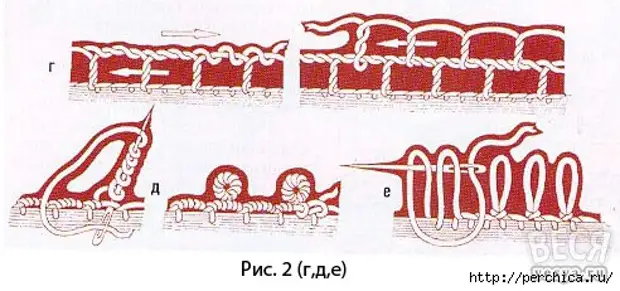
So that the lace from the air loopers was stronger (less "mobile"), air loops can be strengthened with a nodule (Fig. 3). This lace can be sewed both to right to left "A" and left to right "b", as well as with the launching of the thread "B".
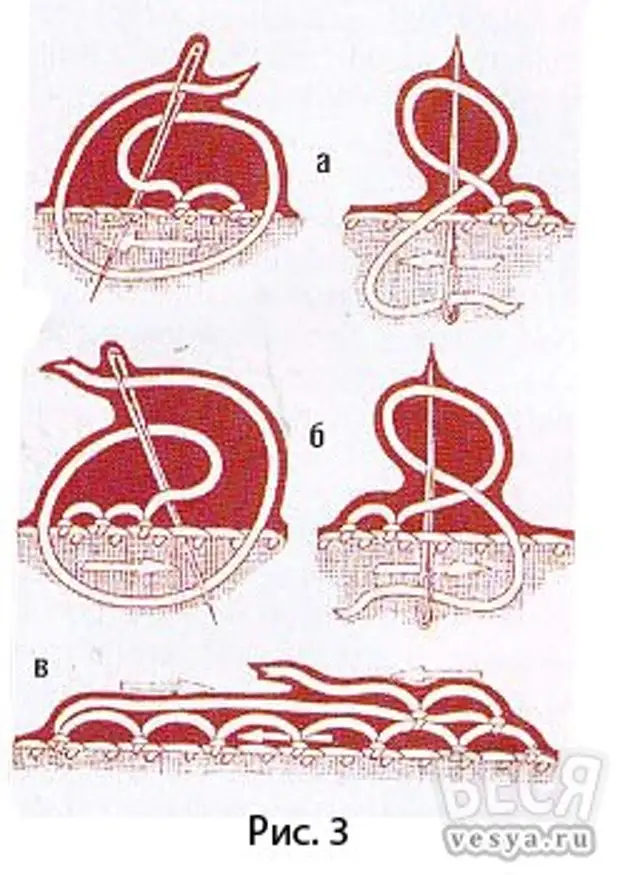
In fig. 4 shows how to pay the teeth: "a" - with a whipping hinge "eight". "B" - with stretching the working thread for a number, "in" - with the processing of the edge of the cloth with a dense, looped seam.
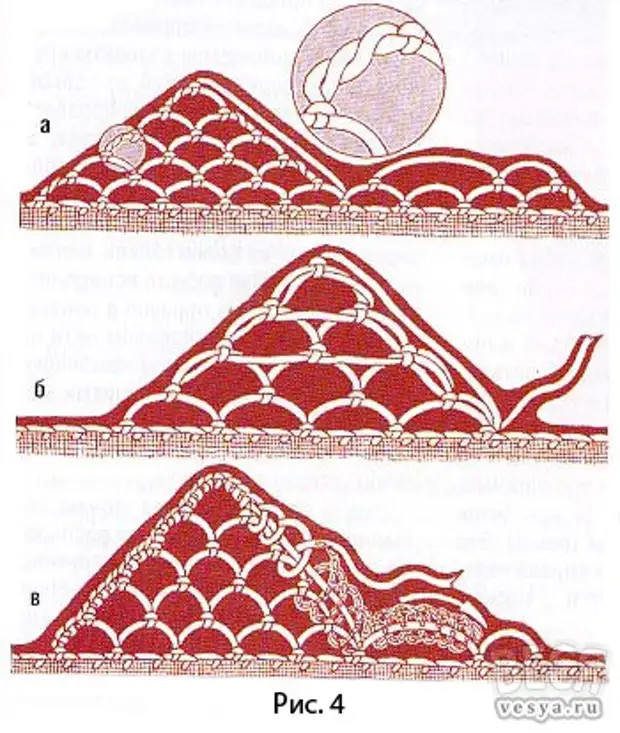
In fig. 5 shows the differences of narrow lace. Single-rug Lace made up of simple loops with Pico "A", from air loops and looppicks between them, bonded by the nodule "b", from the same air loops, but with a flower of three kettops, the extreme loops of which are bonded with a nodule "in". Divose lace is sewn from a series of air loops and a row consisting of loopback over air loops and flowers of three kettops between the "G" air loops, or the same series of air loops and flowers, made on the air loop "D". The sample "E" shows a three-row lace: the first row is the same air loop, the second - loop of different sizes, the third is the covering of the looping joint and the execution of a five-point flower on a large air loop, and three large petals consist of two hinges bonded by a node.
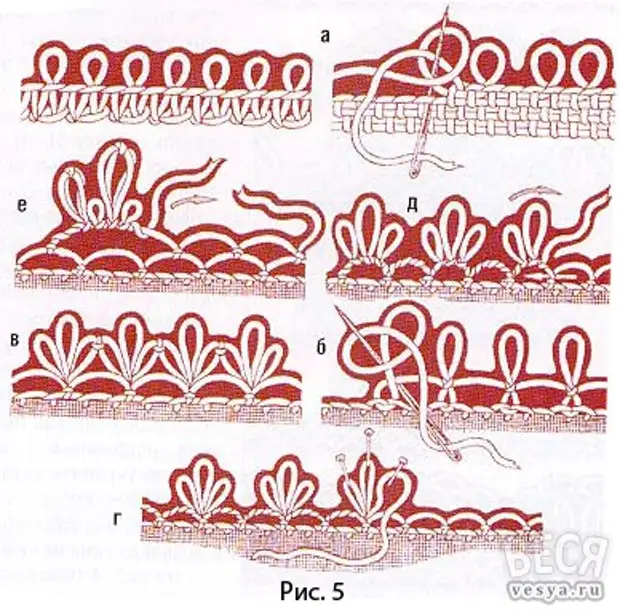
In fig. 6 shows the order of sewing measurement. All work consists of three strokes: 1 - Air Petpi with obscenity of the "legs": 2 - laid free thread in the opposite direction, 3 - processing of the loops together with the laid by the looped seam. The lace stitched on the edge of the measurement pre-performed on the edge of the product.
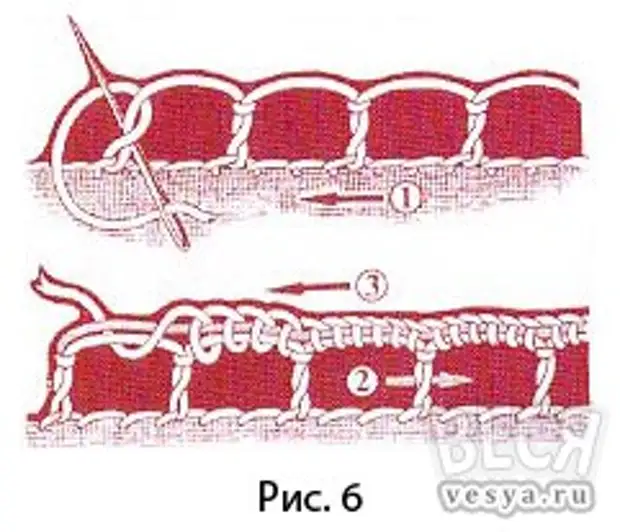
In fig. 7 shows the variants of the lace for the downtown of products made of fine tissue, and in fig. 8 - options for processing the edge of the product from thick fabric. In the latter case, a thick thread is used, for example "Garus", a cordosy thread or a thin cord: you can twist a thread of thinner, for example from iris. It will take a thick needle for work. The sample "A" shows how to make a pico the end of the thread on the needle, on the sample "b" - the sewing of the "turrets" from the air loops, covered with looped seam, on the sample "B" - the execution of the "turrets" of the turkeys.
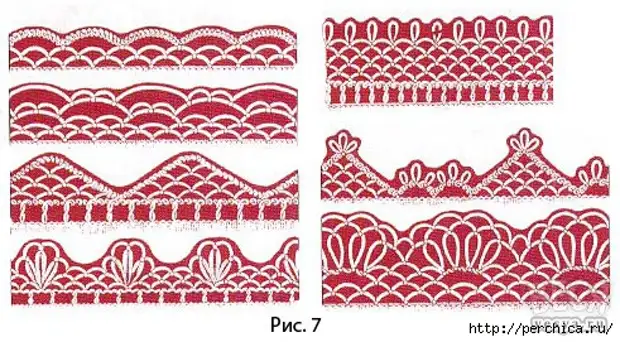
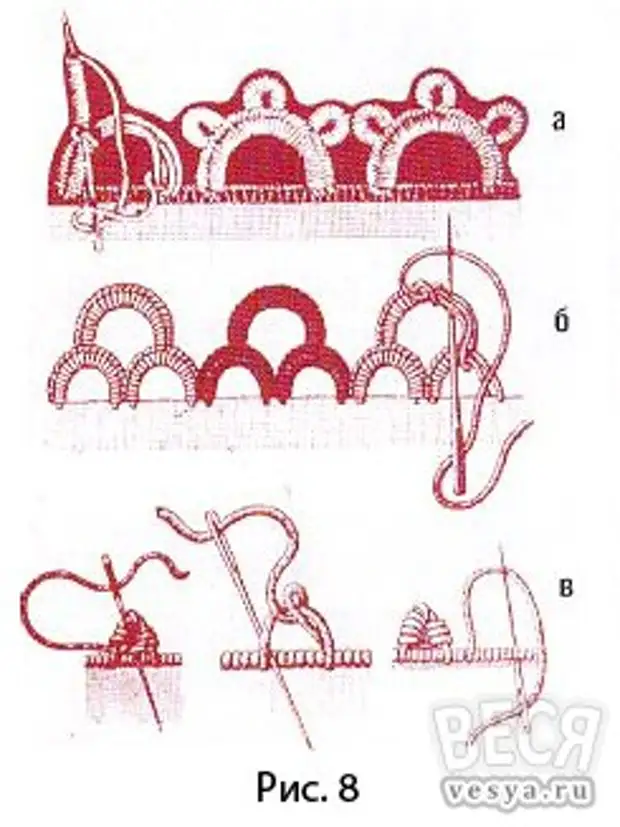
Patterns of simple lace can be made by themselves, combining the location and size of air loops. It all depends on your imagination, if only you mastered the sewing technique "by air" (or on the footing).
one.
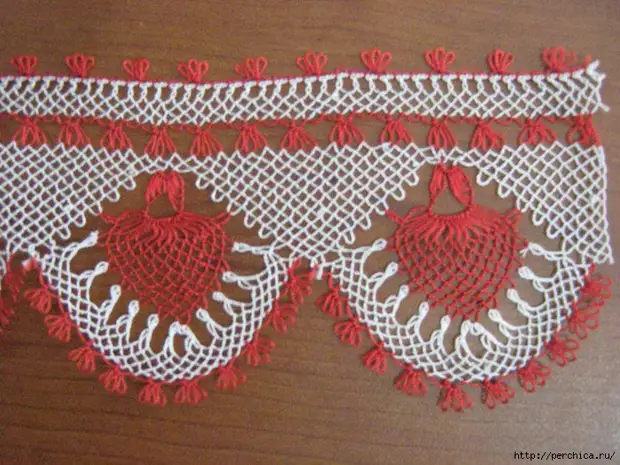
2.
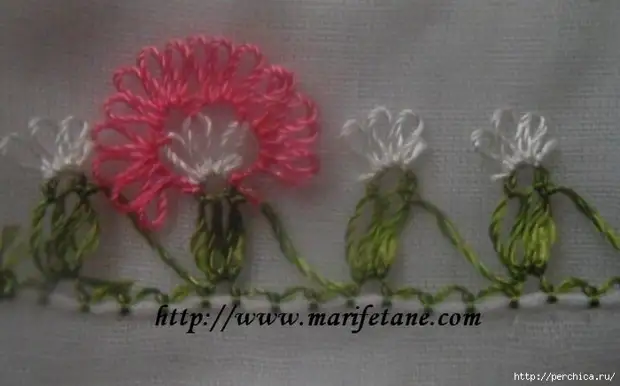
3.
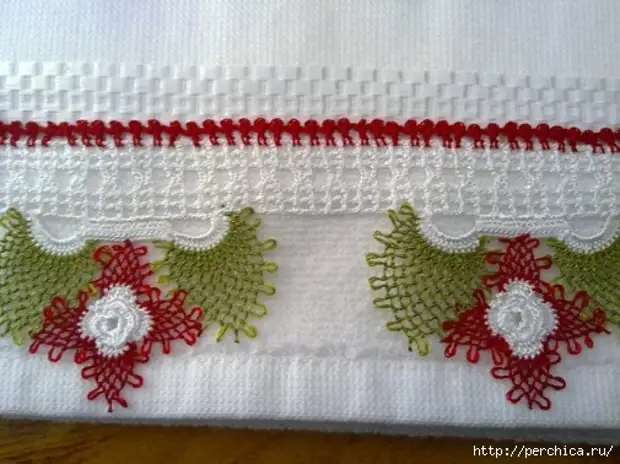
four.
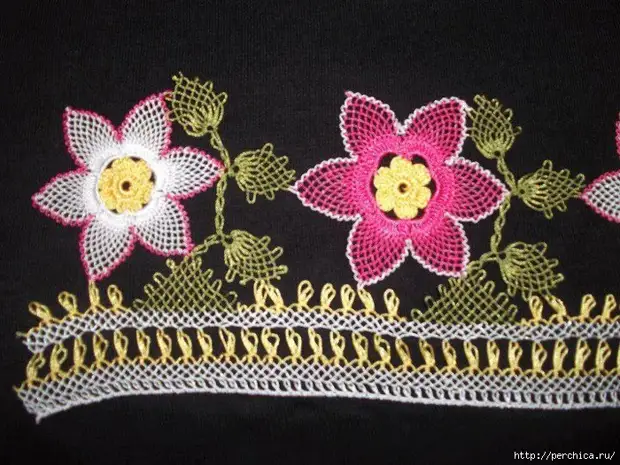
five.
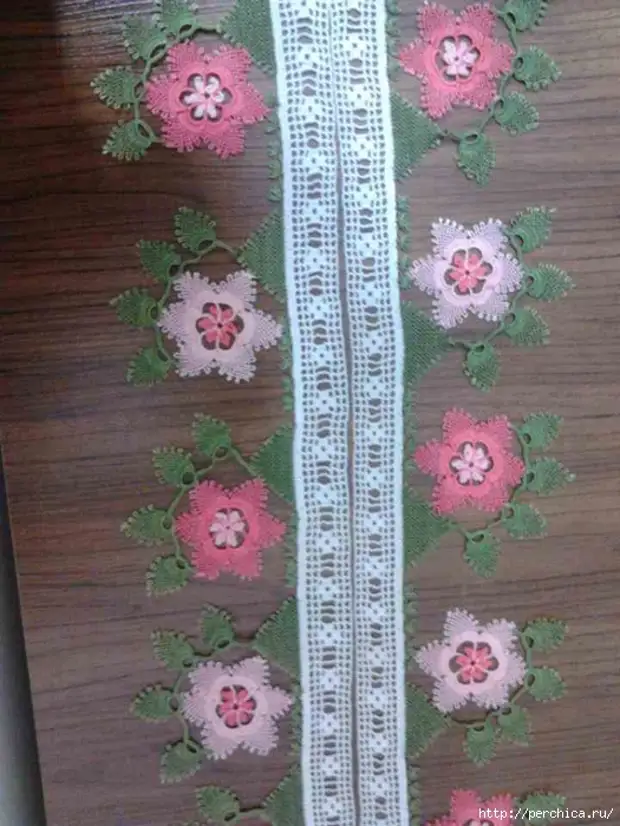
6.
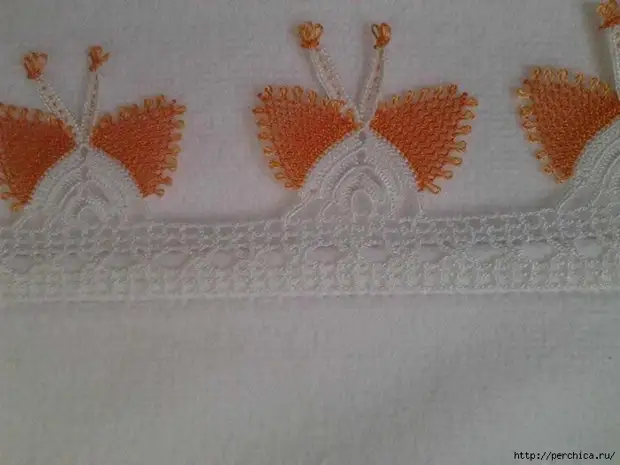
7.
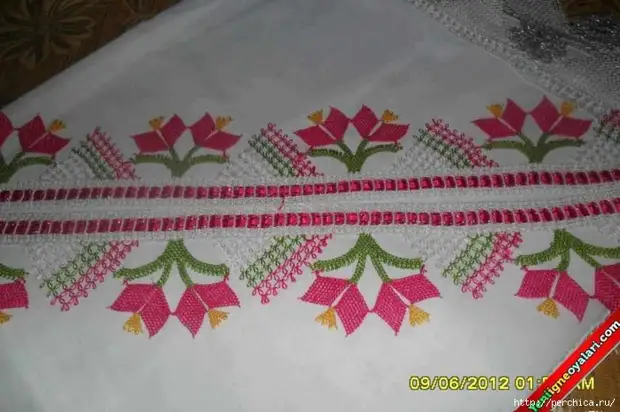
eight.
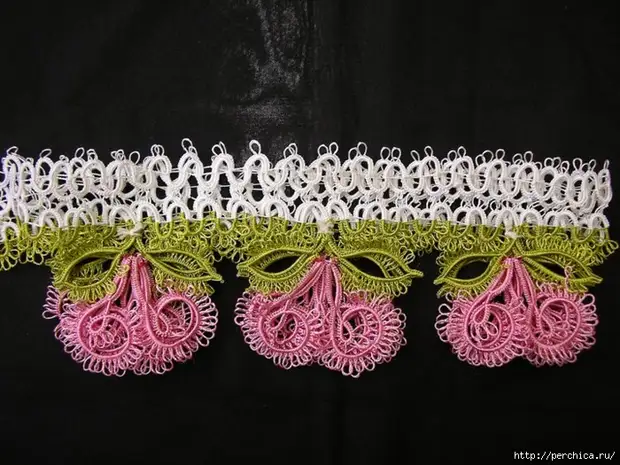
nine.
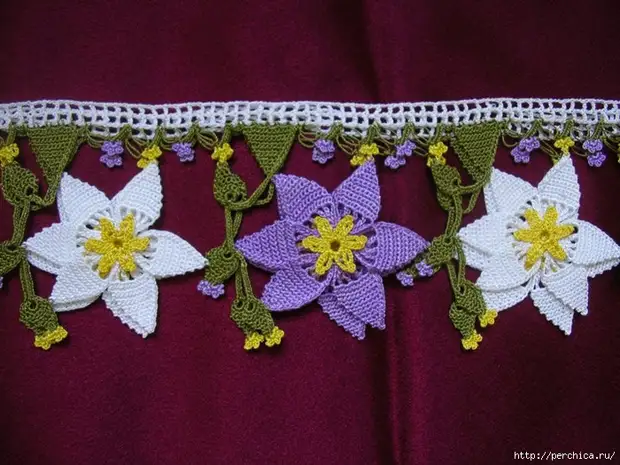
10.
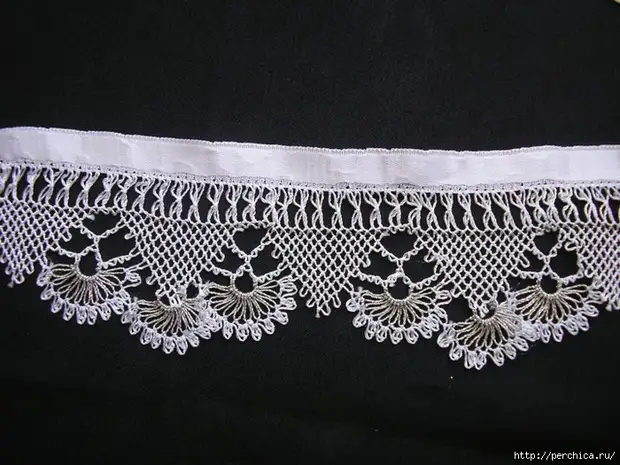
eleven.
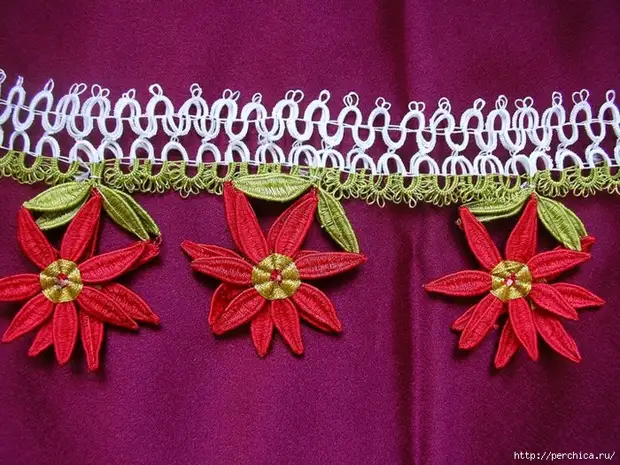
12.
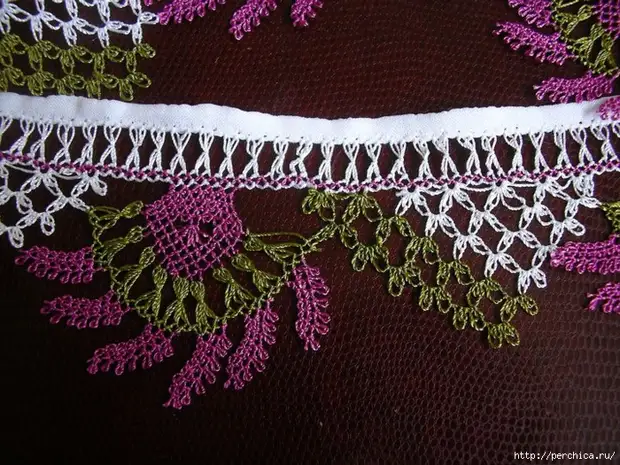
13.
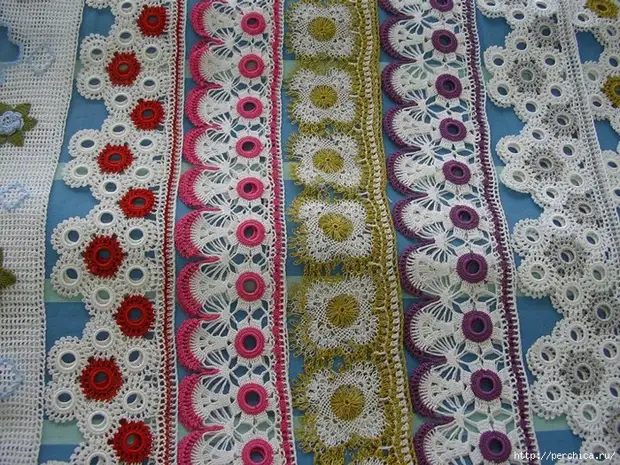
fourteen.
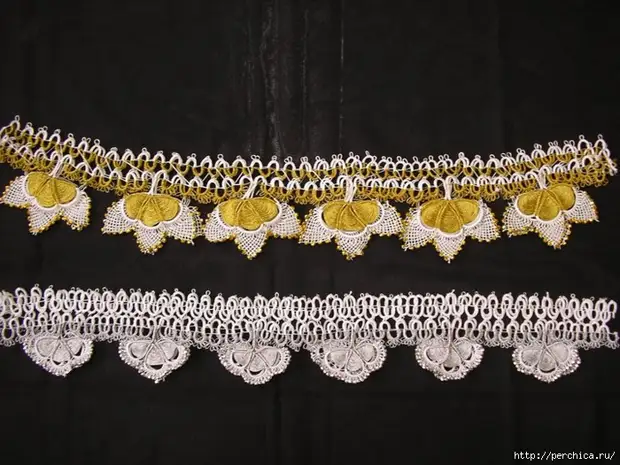
fifteen.
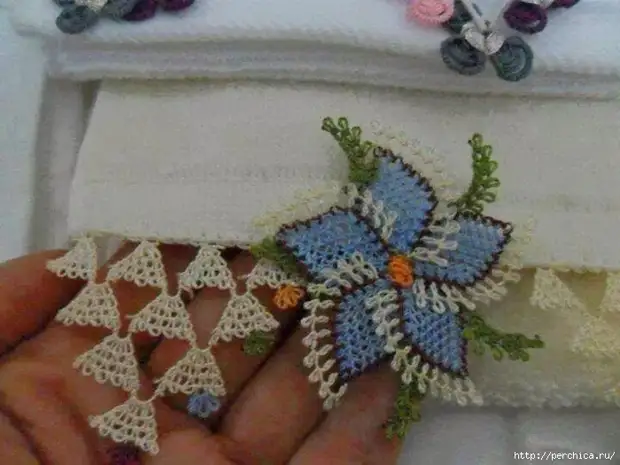
sixteen.
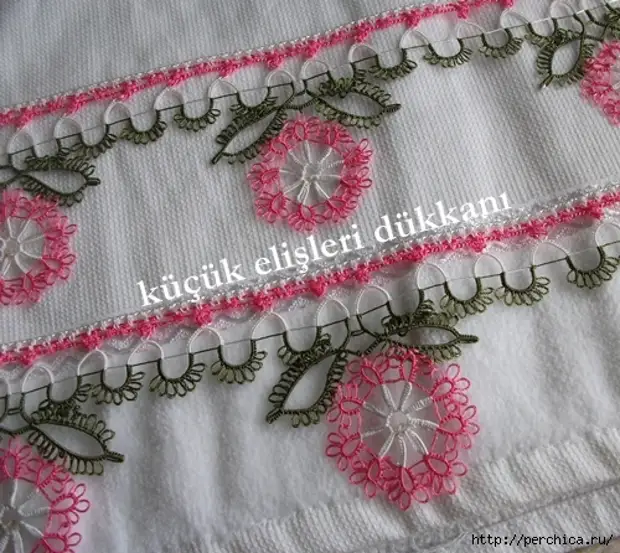
A source
